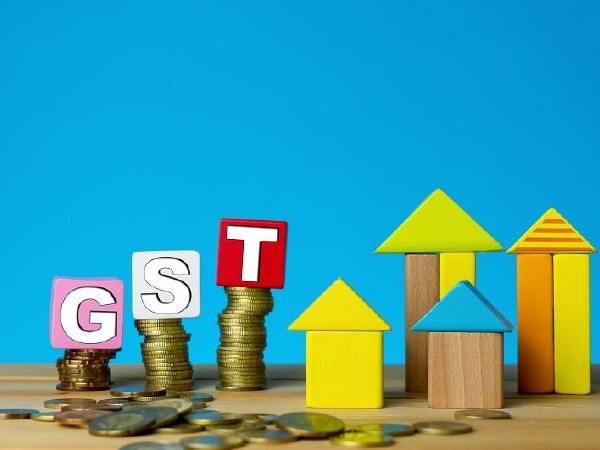Two years of GST: Looking back to think ahead

India celebrated two years of introduction of Goods and Services Tax (GST) on 1 July 2019. During the last two years, GST Council has taken many measures to facilitate ease-of-GST compliance and moderate the impact of GST on India economy. Reduction of tax rates for many commodities, increasing GST thresholds and giving options to service providers to opt for composition/compounding scheme are some examples. The council has also taken steps to strengthen GST administration and introduction of e-way bill is one such example. Despite measures taken up by the GST council to improve tax compliance, GST compliance is yet to stabilize, as a significant section of the taxpayers is still filing GST returns after the due date.
Union Budget 2019-20 has projected growth rate of Central GST collection of 4.4 per cent during 2019-20 with respect to 2018-19. Revenue shortfall in GST collection is an area which is likely to impact both union and state finances. The GST revenue shortfall may arise due to a lack in tax compliance and/ or fall in GDP growth. GDP growth rate fell from 6.6 per cent in Q3 of 2018-19 to 5.8 per cent in Q4 of 2018-19. However, addressing problems associated with the structure and administration of GST would be equally important to raise GST collection. Effective enforcement of any tax system depends on efficient flow of tax information at the grass-root level of tax administration. Backend process of the IT system for GST administration is not yet deployed in many states for all tax administrators; as a result, some tax administrators are still facing problems to access data.
Though GST revenues of the states are protected till June 2022 under the Goods and Services (Compensation to States) Act 2017, understanding the causes of GST revenue shortfall may help state governments to prepare for the regime beyond the GST compensation period (after June 2022). Except for a few states, all states are falling short of GST collection from the projected GST revenue collection (for states GST revenue projection is based on annual growth rate of 14 per cent with reference to the collection of taxes subsumed under GST in 2015-16). Many states have approached the Fifteenth Finance Commission for extension of the GST compensation period beyond June 2022. However, if the GST compensation period is not extended, there will be substantial revenue shocks for the states. Unlike the Union government, state governments have limited taxation power (tax handles) to generate revenue from alternative sources to compensate for revenue loss on account of GST. States have to either mobilize additional revenue from all possible tax and non-tax revenue sources and/or reduce expenditures. Both the moves may be politically costly for State governments.
To compensate revenue shortfall on account of GST, the Union government has raised customs duties on several commodities, increased tax rates on petrol (gasoline) and diesel, imposed higher surcharge on individuals having annual taxable income above Rs 2 crore in the Union Budget 2019-20. Month-wise GST collection shows that except during July to September 2017, month-wise year-on-year growth rate in GST collection was higher than 10 per cent from October 2018 to March 2019. Quarterly tax buoyancy in GST collection was higher than 1, except during Q2 of 2018-19 over Q2 of 2017-18. In fact, during Q3 of 2018-19 tax buoyancy was 1.38 (as compared to Q3 of 2017-18) and 1.21 during Q4 of 2018-19 (as compared to Q4 of 2017-18). However, the monthly growth rate in GST collection has fallen down from April 2019. The growth rate in GST collection in the month of April was 6.67 per cent (with respect to April 2018) and 4.53 per cent in the month of May 2019 (with respect to May 2018).
The impact of the falling trend in GST collection will not be restricted to the union finances alone it will also spill over to state finances in terms of lower tax devolution. Devising inter-governmental fiscal transfer mechanism in the presence of revenue uncertainty is a challenge for the Fifteenth Finance Commission, which is in office now.
A close look at the figure will reveal that as compared to Q2 (July-Sept) of 2018-19, growth rates in GST collection in Q3 (Oct-Dec) and Q4 (Jan-Mar) of 2018-19 were higher than that of 2017-18. This is largely attributable to lower average monthly GST collection during October 2017 to January 2018 vis-à-vis July to September 2017. In other words, fall in average GST collection during October to December 2017 (as compared to Q2 of 2017-18) and a moderate increase in average monthly GST collection during October to December 2018 has resulted in higher growth (year-to-year) in GST collection during Q2 and Q3 of 2018-19. From the experience of monthly GST collection during last two years of GST introduction, one can conclude that GST collection rises towards the end of the financial year (during February and March) (see figure below). The bunching of tax payments towards the end of the financial year is not new in the Indian tax system.
However, what is surprising is that GST collection during festival months (September to November) shows mixed bag experience between 2018-19 and 2017-18. To achieve the growth rate experienced from October 2018 to March 2019 in 2019-20, average monthly GST collection has to reach Rs 1,15,959 crore. So far average monthly GST collection from the first two months of 2019-20 is Rs 100,114 crore, therefore there is a shortfall of Rs 15, 845 crore in monthly GST collection. Alternatively, to achieve 14 per cent growth rate in monthly GST collection in 2019-20 with respect to actual GST collection in 2018-19, average monthly GST collection has to reach Rs 1,12,839 crore. However, average tax collection during first two months (April – May) of 2019-20 falls short of Rs 12,725 crore if we set the 14 per cent growth target. Therefore reviving economic growth as well as strengthening GST administration may help to increase GST collection in the coming months of 2019-20.





